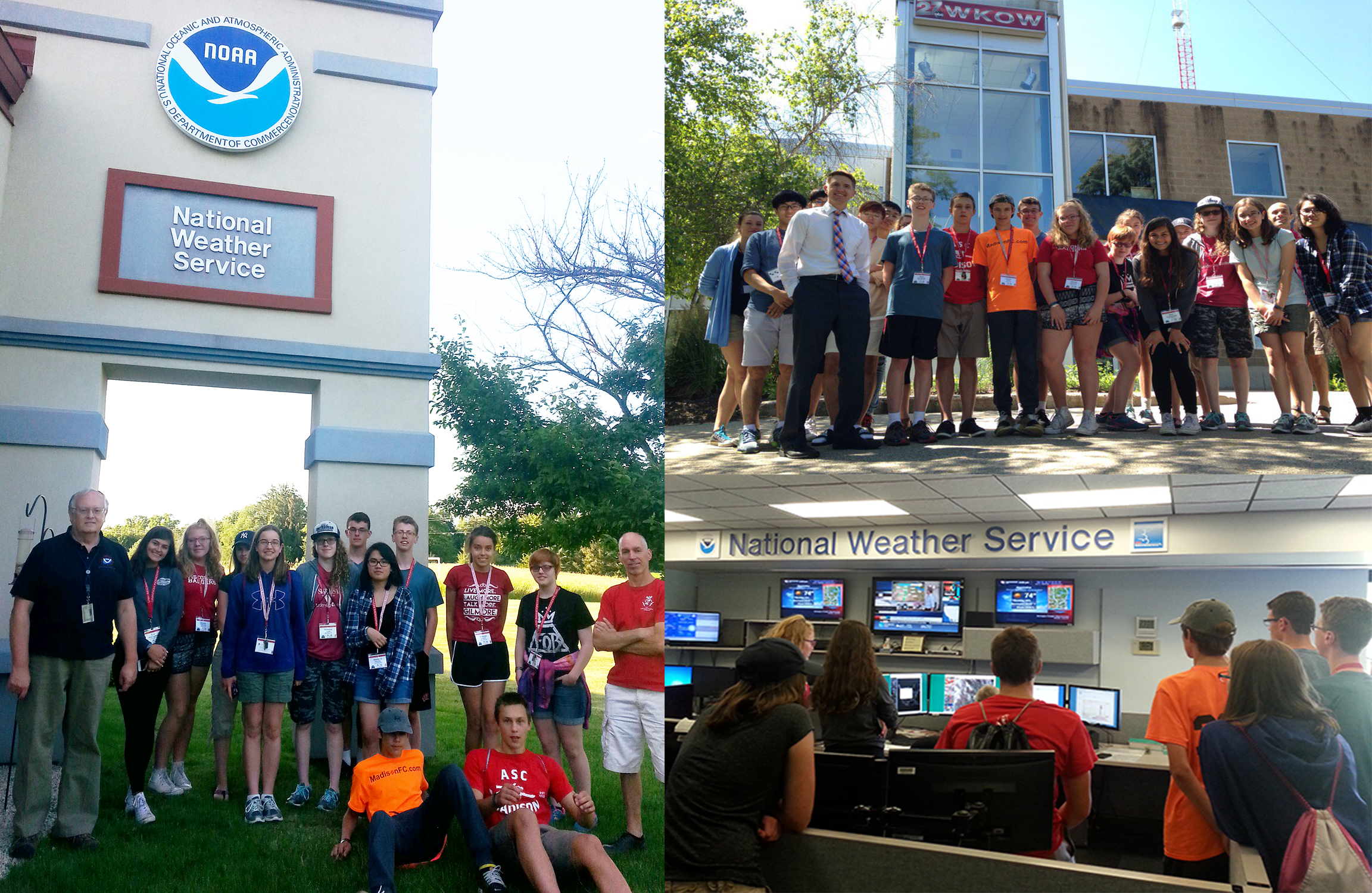
[ Archive ]

 |
CIMSS-NOAA Weekly Report [ Archive ] |
 |
ASPB AND CIMSS WEEKLY HIGHLIGHTS FOR THE WEEK ENDING JUNE 30, 2017
IN THE PRESS:
ITEMS FOR THE ADMINISTRATOR:
ITEMS FOR THE ASSISTANT ADMINISTRATOR:
ITEMS FOR THE OFFICE DIRECTOR, STAR:
CIMSS STEM camp for High School Students: Twelve high school students from Wisconsin, Minnesota and Illinois attended an annual Earth Science summer workshop organized by the Cooperative Institute for Meteorological Satellite Studies (CIMSS) the week of June 25th-29th. Students were fortunate to interact first-hand with scientists, professors, graduate students, researchers, TV meteorologists and National Weather Service meteorologists. The packed agenda addressed each STEM discipline of Science, Technology, Engineering and Math with sessions in satellite remote sensing, meteorology, satellite meteorology, geology, astronomy, and limnology. The CIMSS student workshop has been offered since 1991, maintaining a pipeline for future career scientists. For more information visit http://cimss.ssec.wisc.edu/studentworkshop/. (M. Mooney, CIMSS, 608-2652123, M. Vasys, CIMSS, 608-263-7435)
 (Click image to enlarge)
(Click image to enlarge)
Figure caption: Scenes from WKOW and NWS MKX.
American Samoa Forecast Office Trained: On 22 and 23 June 2017, Scott Lindstrom and Jordan Gerth of the Cooperative Institute for Meteorological Satellite Studies (CIMSS) conducted training for the meteorologists at the National Weather Service (NWS) Office (WSO) in Pago Pago, American Samoa. The training covered the imaging capabilities and applications of Himawari-8, and addressed questions from the staff on the launch plans for the next satellite in the Geostationary Operational Environmental Satellite (GOES) R-Series, GOES-S. The training was particularly important for American Samoa because it is the only NWS office with forecast responsibilities that does not have nearby Doppler radar. Forecast operations are based on satellite imagery interpretation and a small number of in-situ surface observations. (J. Gerth, CIMSS, 608-263-4942)
ITEMS FOR THE DIVISION CHIEF, CoRP:
USGS Powell Center Working Group: Mike Pavolonis (NOAA/NESDIS/STAR) remotely participated in a June 26-29, 2017 meeting of a United States Geological Survey (USGS) Powell Center working group tasked with optimizing satellite resources for the global assessment and mitigation of volcanic hazards (https://powellcenter.usgs.gov/view-project/577422c8e4b07657d1a9915d). The Powell Center is a scientist-driven institution where leveraging existing research efforts produces powerful new insights and moves scientific understanding and its inclusion into management forward at an accelerated pace. The goals of the meeting were to: document satellite data needs for monitoring volcanoes, improve satellite-based volcanic eruption databases, and begin work on manuscripts that illustrate the benefits of combining data from different satellite sensors. M. Pavolonis gave a briefing on NOAA’s efforts to automatically detect and characterize volcanic clouds using the VOLcanic Cloud Analysis Toolkit (VOLCAT). NOAA participation in this Powell Center project is helping to improve NOAA’s volcanic hazard related products through collaboration with other Federal agencies and academia on satellite data integration. In addition, participation in the Powell Center project supports NOAA and USGS collaboration on volcanic hazards, which the USGS recently encouraged in letters to NOAA/NESDIS and NOAA/NWS leadership. (M. Pavolonis, E/RA2, 608-263-9597, Mike.Pavolonis@noaa.gov)
VISITORS:
NEXT WEEK:
LOOKING AHEAD:
| Archived Weeklies Page | Submit a report item |